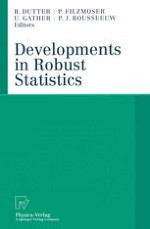Aspects of Robust Statistics are important in many areas. Based on the International Conference on Robust Statistics 2001 (ICORS 2001) in Vorau, Austria, this volume discusses future directions of the discipline, bringing together leading scientists, experienced researchers and practitioners, as well as younger researchers. The papers cover a multitude of different aspects of Robust Statistics. For instance, the fundamental problem of data summary (weights of evidence) is considered and its robustness properties are studied. Further theoretical subjects include e.g.: robust methods for skewness, time series, longitudinal data, multivariate methods, and tests. Some papers deal with computational aspects and algorithms. Finally, the aspects of application and programming tools complete the volume.
